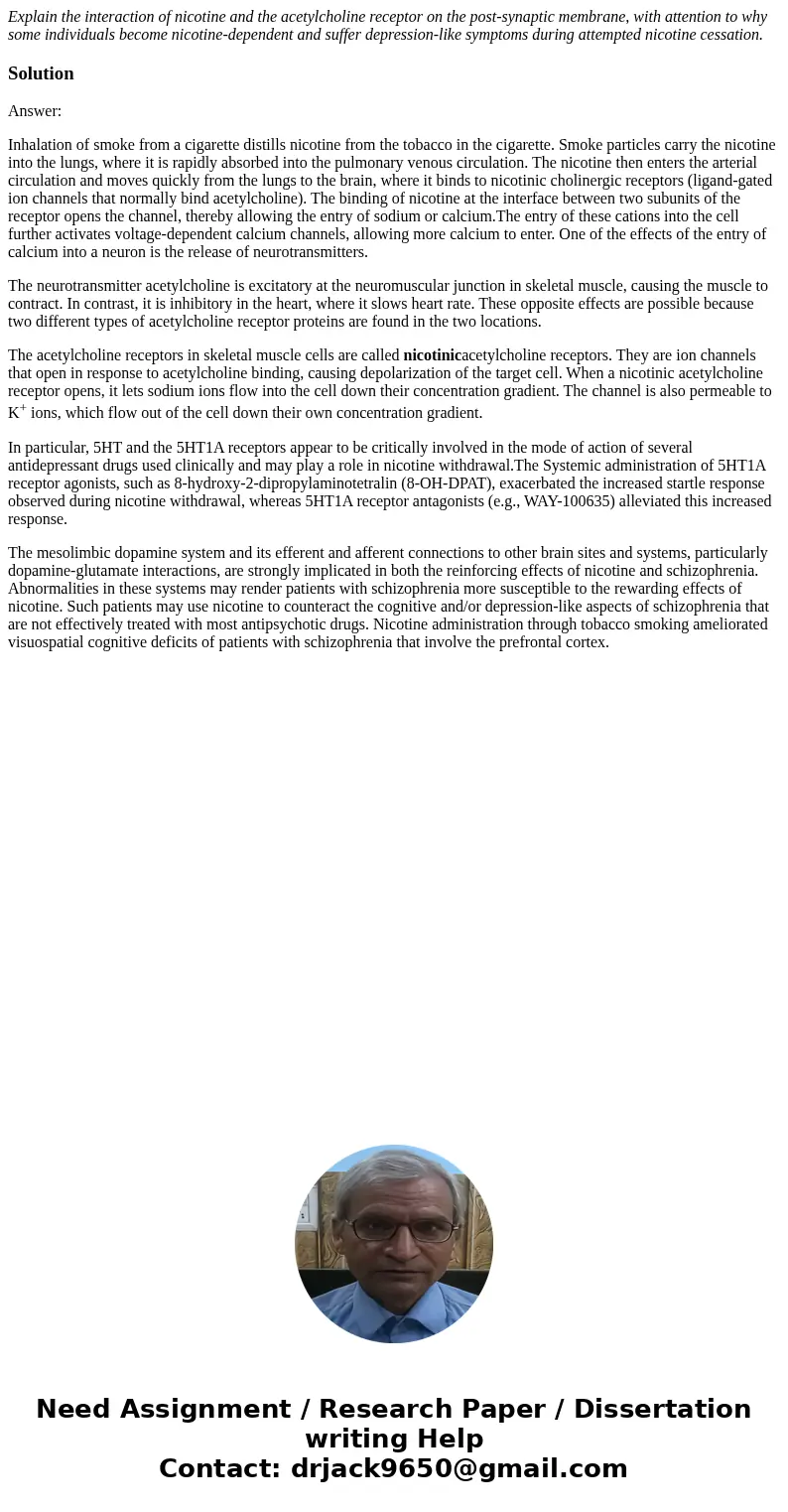Explain the interaction of nicotine and the acetylcholine re
Explain the interaction of nicotine and the acetylcholine receptor on the post-synaptic membrane, with attention to why some individuals become nicotine-dependent and suffer depression-like symptoms during attempted nicotine cessation.
Solution
Answer:
Inhalation of smoke from a cigarette distills nicotine from the tobacco in the cigarette. Smoke particles carry the nicotine into the lungs, where it is rapidly absorbed into the pulmonary venous circulation. The nicotine then enters the arterial circulation and moves quickly from the lungs to the brain, where it binds to nicotinic cholinergic receptors (ligand-gated ion channels that normally bind acetylcholine). The binding of nicotine at the interface between two subunits of the receptor opens the channel, thereby allowing the entry of sodium or calcium.The entry of these cations into the cell further activates voltage-dependent calcium channels, allowing more calcium to enter. One of the effects of the entry of calcium into a neuron is the release of neurotransmitters.
The neurotransmitter acetylcholine is excitatory at the neuromuscular junction in skeletal muscle, causing the muscle to contract. In contrast, it is inhibitory in the heart, where it slows heart rate. These opposite effects are possible because two different types of acetylcholine receptor proteins are found in the two locations.
The acetylcholine receptors in skeletal muscle cells are called nicotinicacetylcholine receptors. They are ion channels that open in response to acetylcholine binding, causing depolarization of the target cell. When a nicotinic acetylcholine receptor opens, it lets sodium ions flow into the cell down their concentration gradient. The channel is also permeable to K+ ions, which flow out of the cell down their own concentration gradient.
In particular, 5HT and the 5HT1A receptors appear to be critically involved in the mode of action of several antidepressant drugs used clinically and may play a role in nicotine withdrawal.The Systemic administration of 5HT1A receptor agonists, such as 8-hydroxy-2-dipropylaminotetralin (8-OH-DPAT), exacerbated the increased startle response observed during nicotine withdrawal, whereas 5HT1A receptor antagonists (e.g., WAY-100635) alleviated this increased response.
The mesolimbic dopamine system and its efferent and afferent connections to other brain sites and systems, particularly dopamine-glutamate interactions, are strongly implicated in both the reinforcing effects of nicotine and schizophrenia. Abnormalities in these systems may render patients with schizophrenia more susceptible to the rewarding effects of nicotine. Such patients may use nicotine to counteract the cognitive and/or depression-like aspects of schizophrenia that are not effectively treated with most antipsychotic drugs. Nicotine administration through tobacco smoking ameliorated visuospatial cognitive deficits of patients with schizophrenia that involve the prefrontal cortex.

 Homework Sourse
Homework Sourse